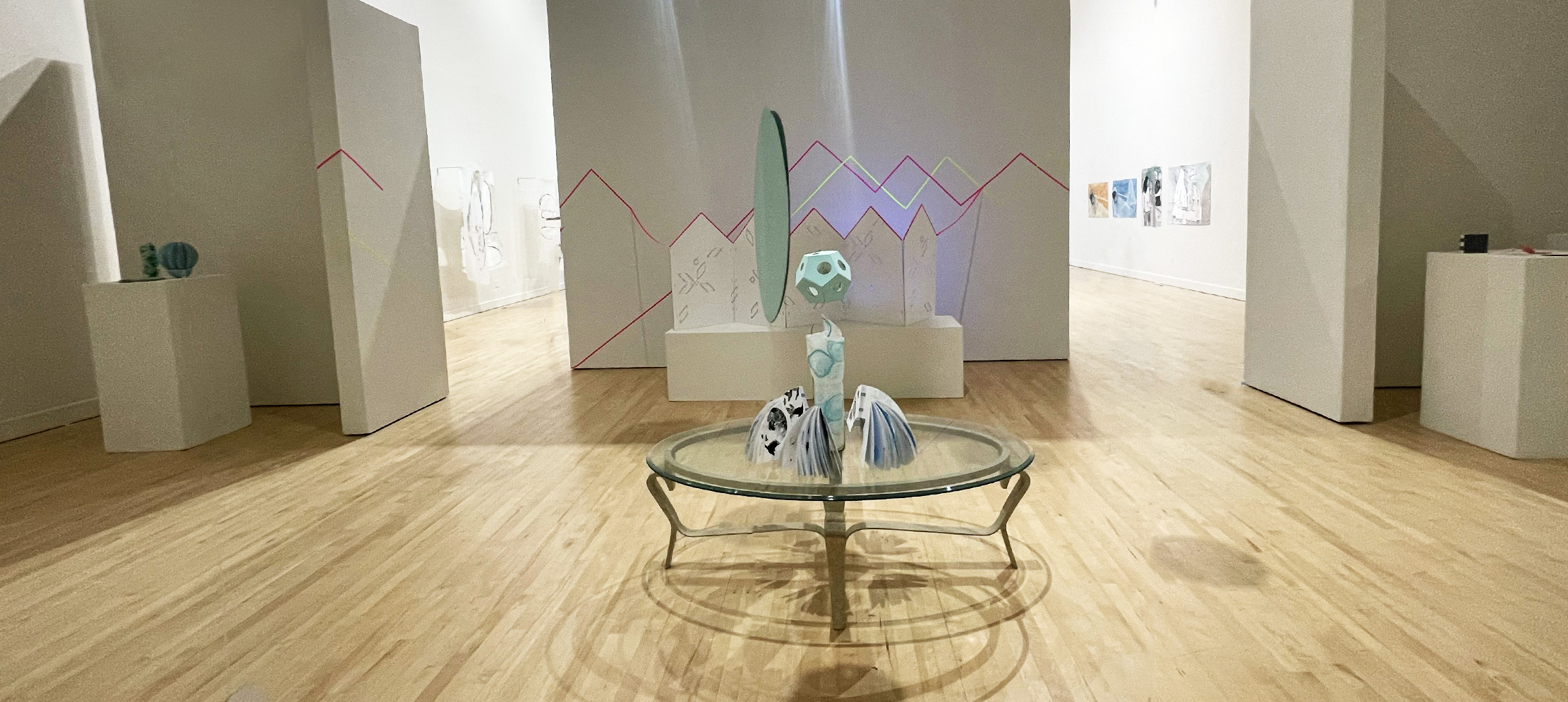Exhibition in Schmidt Gallery, April-May 2024.
The integration of artificial intelligence (AI) into society and individual lives is
unavoidable. Various AI technologies have already become integral parts of daily life, often
entering unnoticed. Examples include navigation systems on smartphones, personalized
recommendations on streaming platforms like Netflix, friend suggestions on social media,
virtual assistants like Siri and Alexa, and AI-driven banking services, among others.
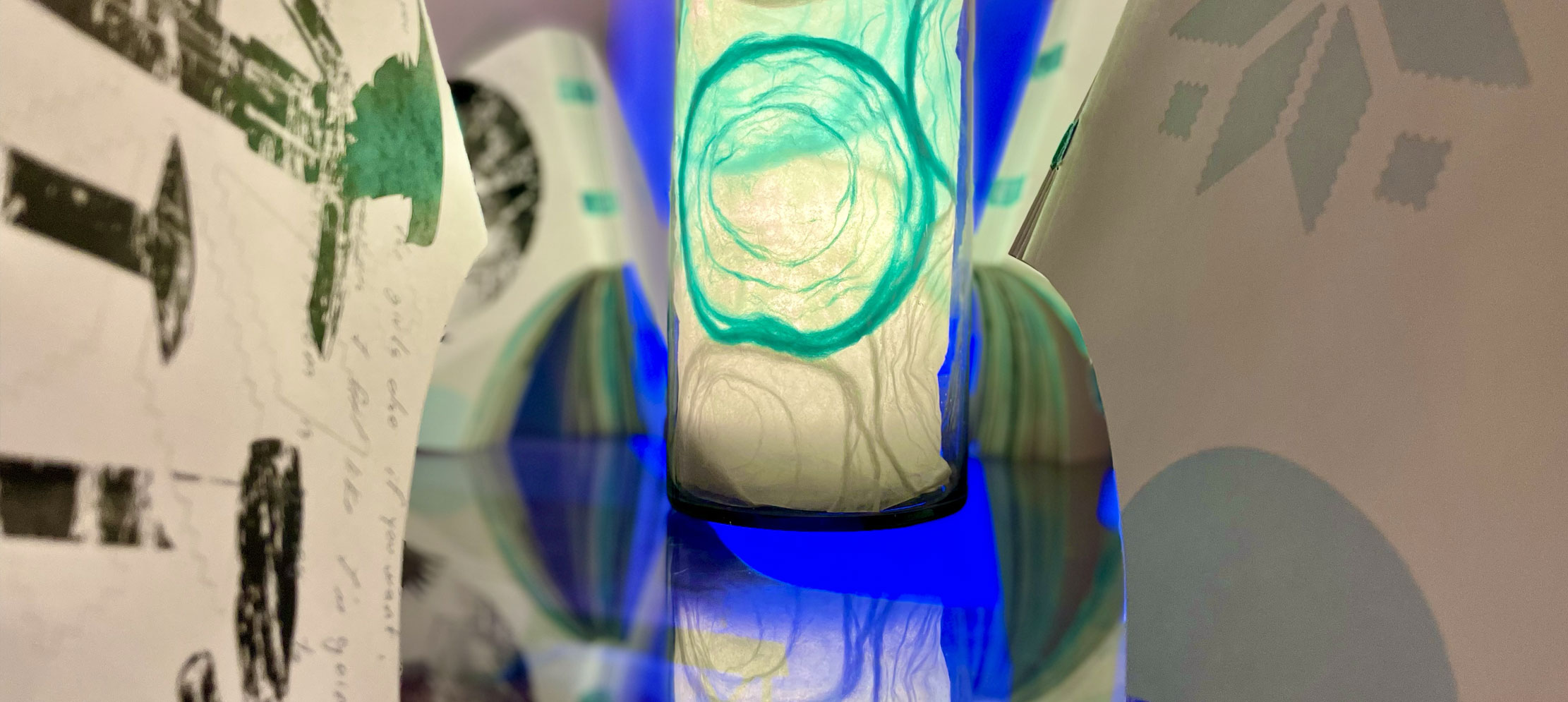
My research into the benefits and dangers of AI in our lives influenced my recent work, presented in Schmidt Gallery as part of my exhibition, AI Family. I aimed to create an experience that reflects how AI collects personal data about family members and shares it with unknown entities, often without transparency. My work also explores the underrepresented genre of portraiture in artist's books and web design, combining techniques like sketching, drawing, illustration, and innovative website coding.
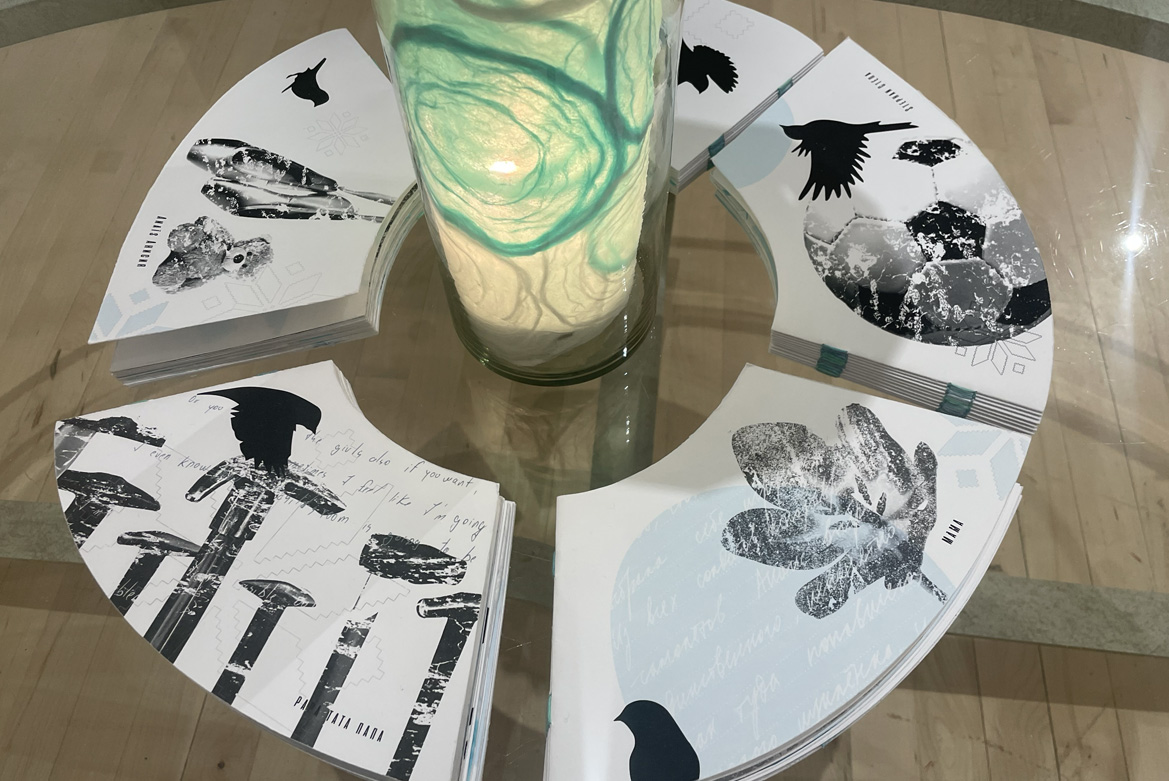
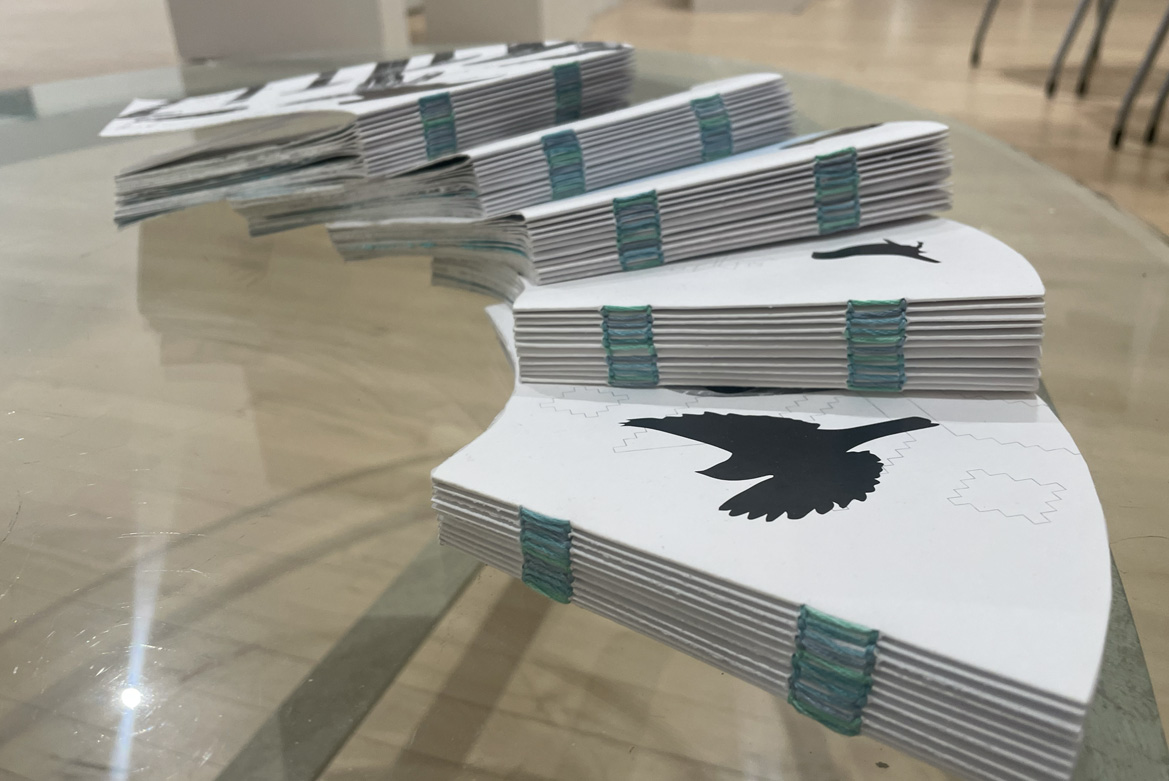
Traditionally, families have passed down similar values and methods of raising children, shaping their identities. However, the pervasive influence of AI raises concerns that society may gradually lose the autonomy to make choices and provide guidance. Instead, AI algorithms might subtly steer individuals—parents and children alike—toward specific information, news, beliefs, behavioral patterns, and preferences.
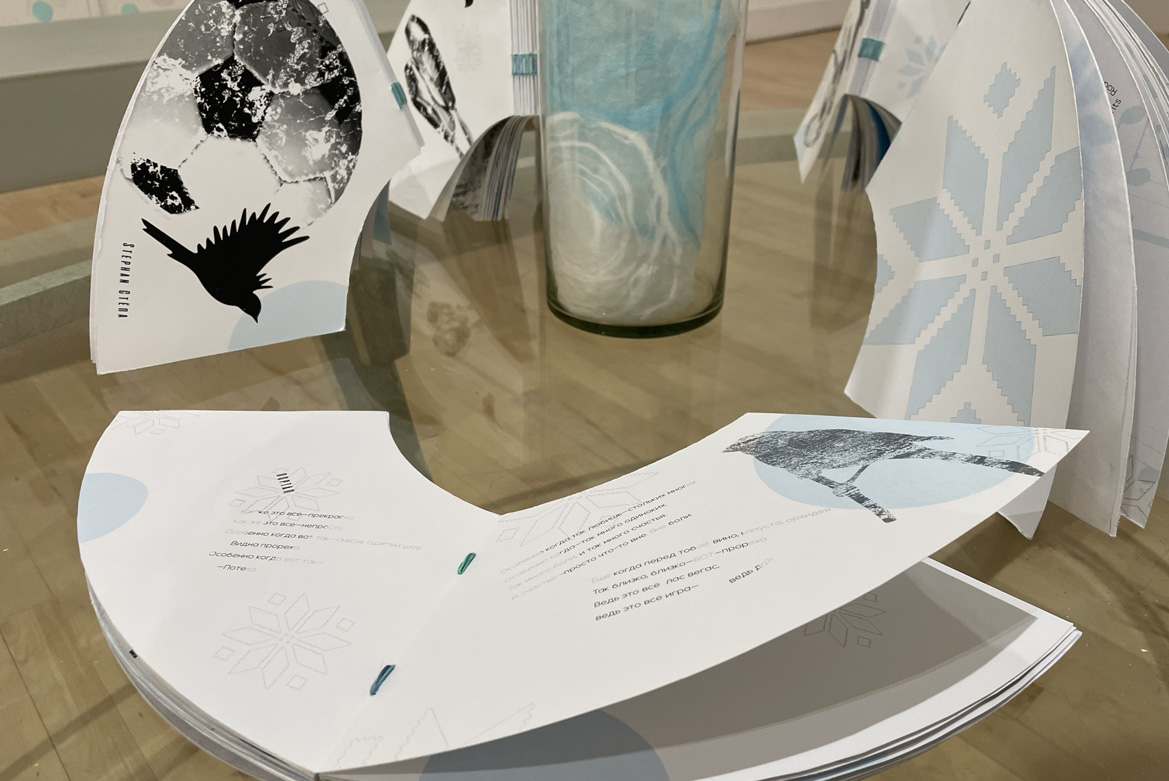
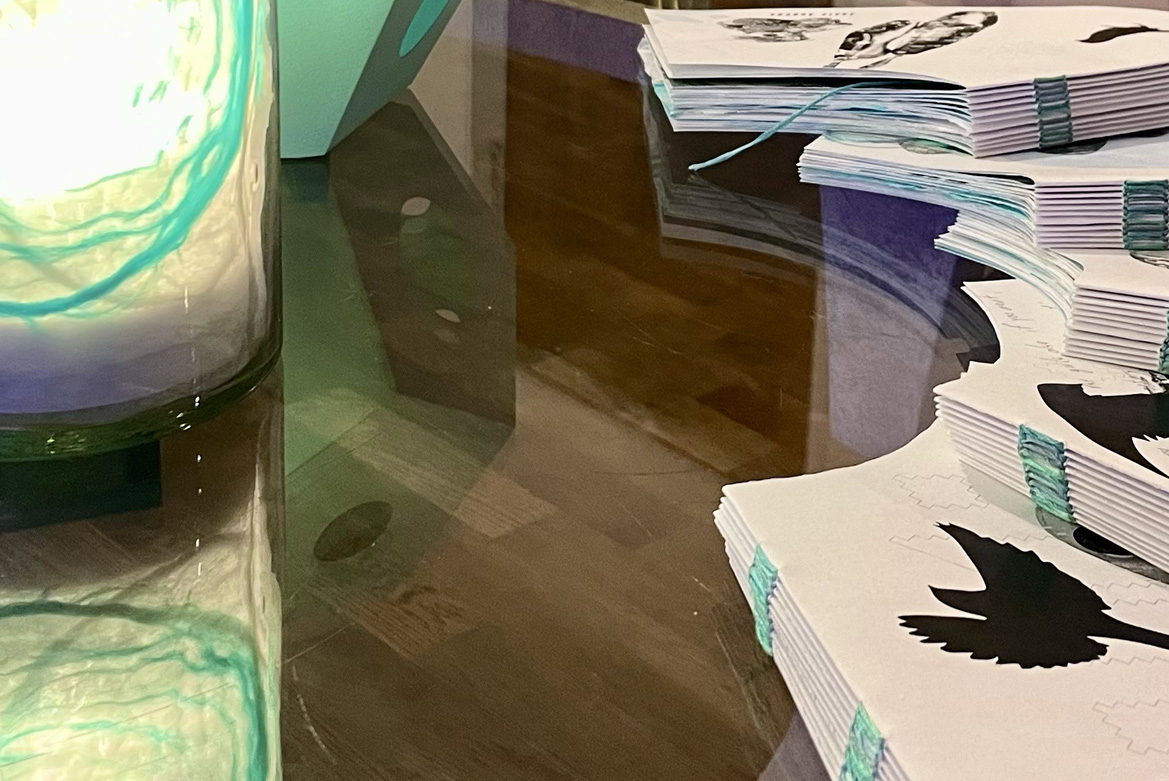
I created this composition of five artist's books, titled Family Portrait with AI, with a hanging dodecahedron representing AI to illustrate the seamless integration of AI into our families that occurred almost overnight. Beginning with the advent of widespread internet and culminating in today’s omnipresent AI, individuals may find themselves more influenced by external decisions than they realize. This influence operates through the collection of data, or data harvesting, about all individuals and the groups to which they belong, including their families.
Below, you can see the layout for some of the pages of the artist's books.
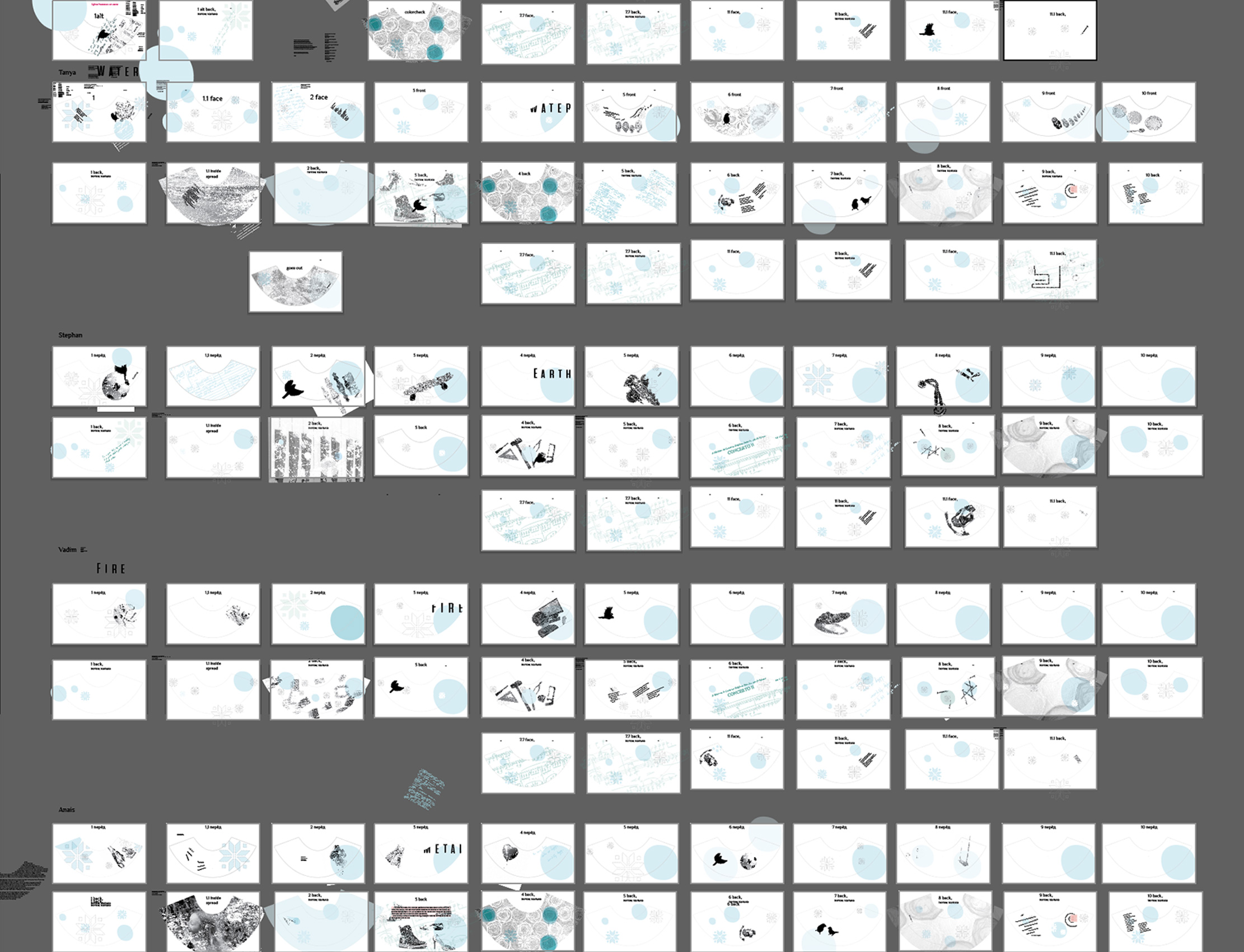
For this project I drew inspiration from my own family as a microcosm of society, while also reflecting on the family as a universal concept. I wanted my books to be recognized as a family portrait. I unified elements such as ovals and Slavic ornamentation across the five books, with ovals symbolizing unity and similarities, and the ornaments representing cultural and upbringing differences.
This culminated in the central, sixth book, which represents the AI data collected from my family. By designing this book in the form of a dodecahedron, I emphasized the enigmatic and opaque nature of data collection, as well as the ambiguity surrounding the ownership of this data.

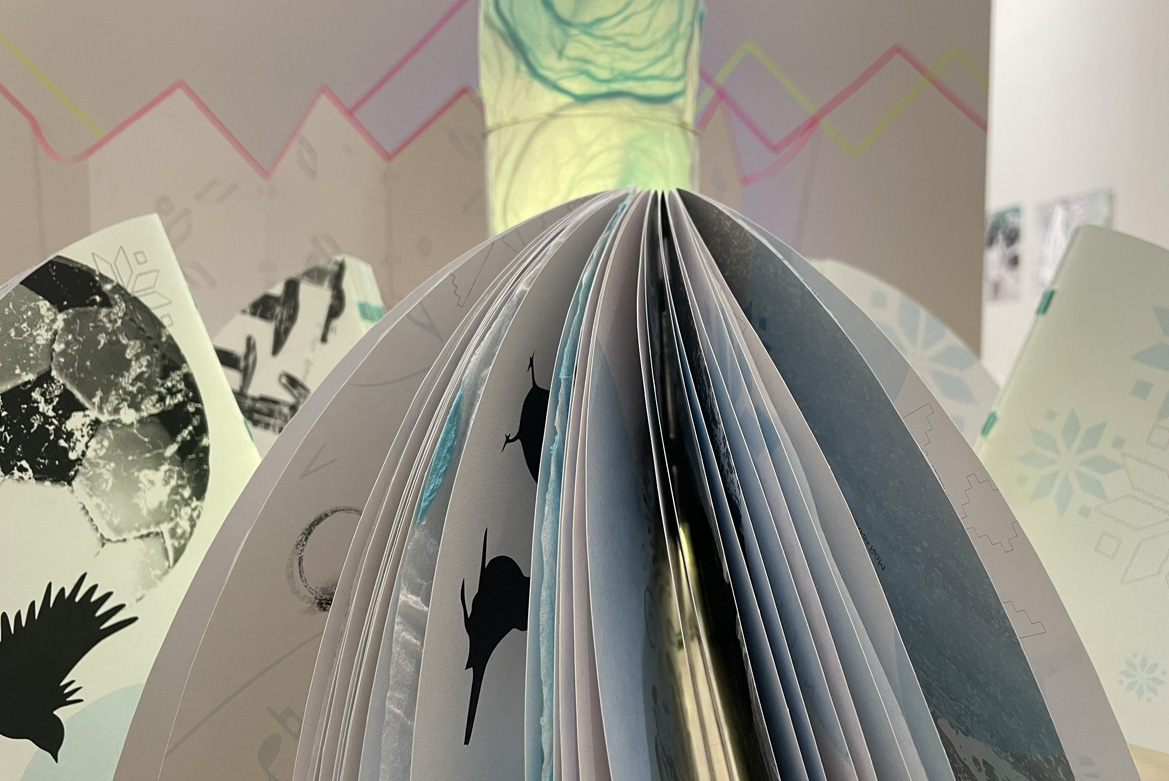
The dodecahedral form of the book evokes the Roman dodecahedrons discovered in many parts of the Roman Empire, which still remain a mystery for scientists, with their purpose not clearly understood. Although the version of these objects being used for the most optimal burning of candles is the most appealing to me, the question remains open, to the extent that statues and various artworks have been made in exploration of this object as a symbol of the mysteries that surround our past and future.
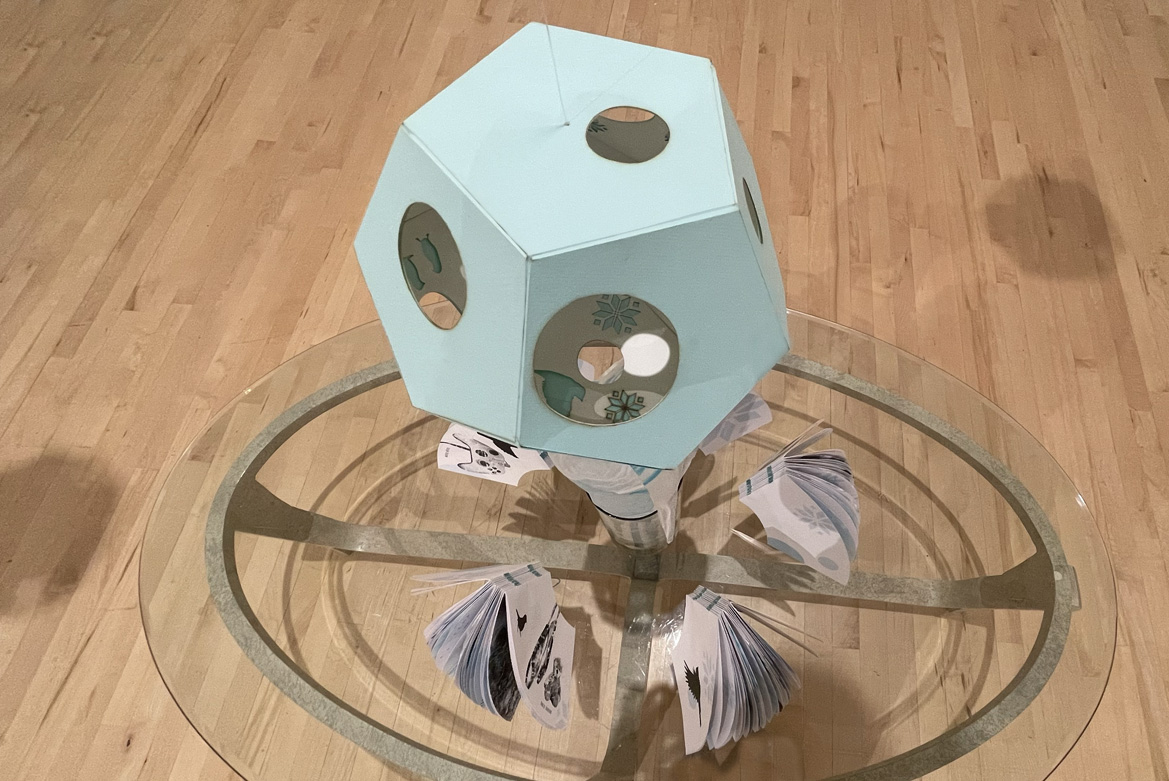
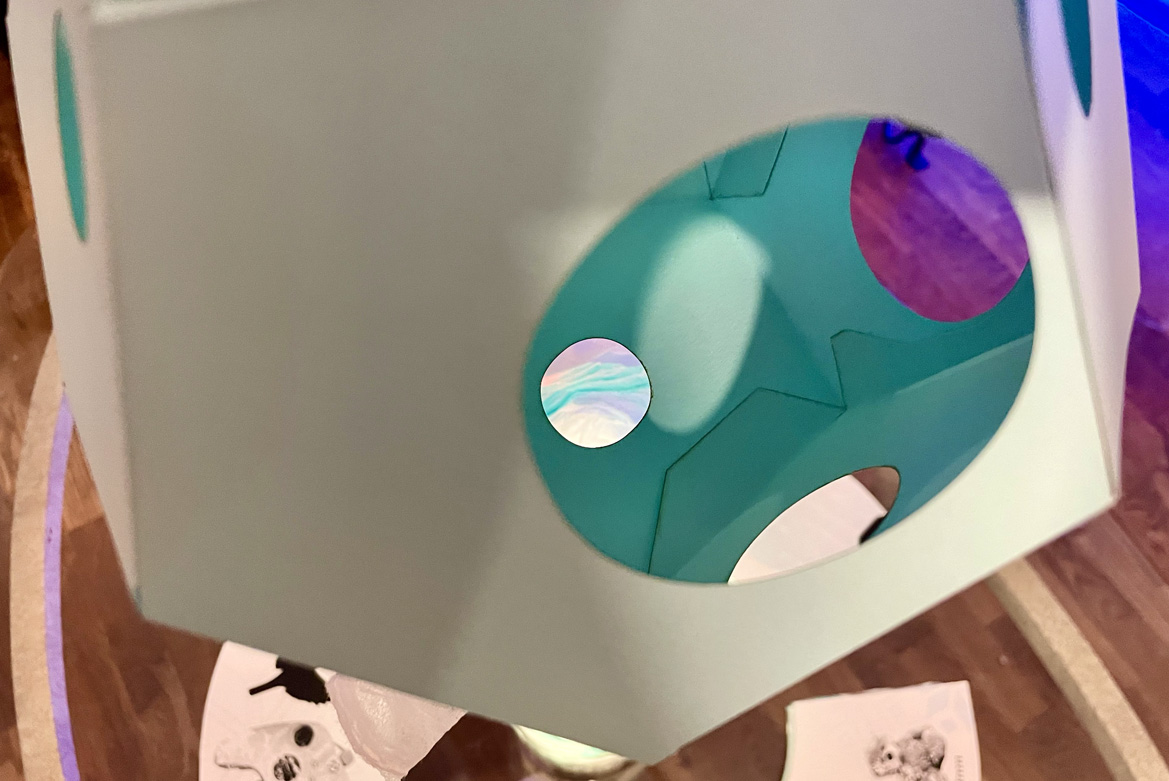
In my project, these dodecahedral fixtures, Families Suspended on the Strings of Data, serve as a current mystery of data harvesting and storing by the unknown companies, personas, or organizations, with unpredictable future usage. They serve as a reminder of the uninvited but convenient new family member, AI.
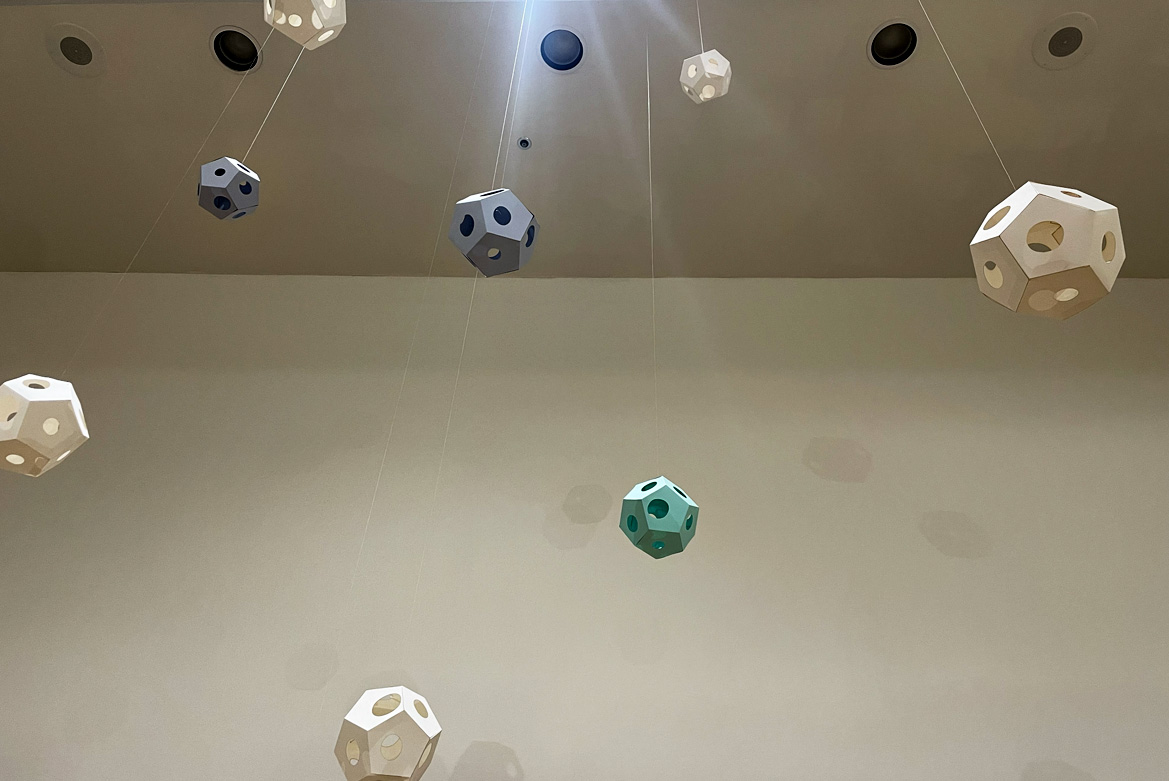
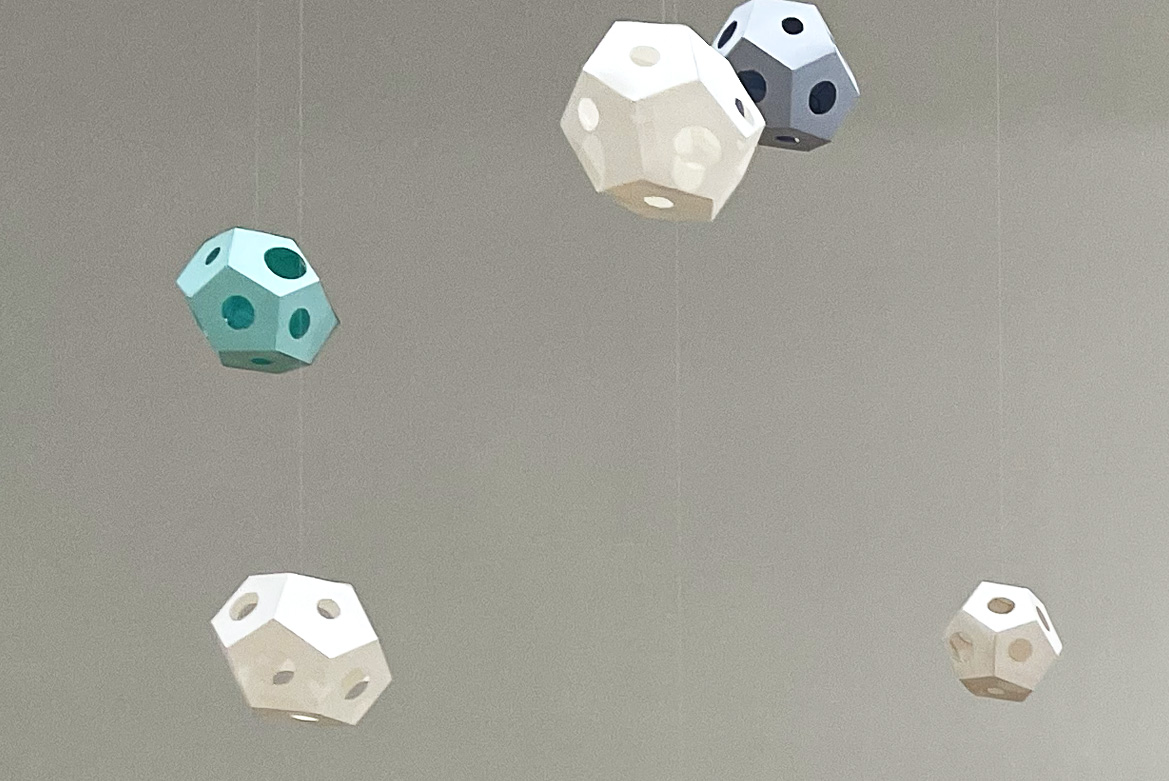
I used X-acto knife and laser cutter to work on these dodecahedral fixtures, creating patterns on the interior sides of the figures. These patterns incorporate the same elements featured in my books but present them in a more mysterious and abstract manner. The interplay between the intricate designs and the form of the dodecahedron enhances the sense of enigma surrounding the data representation.

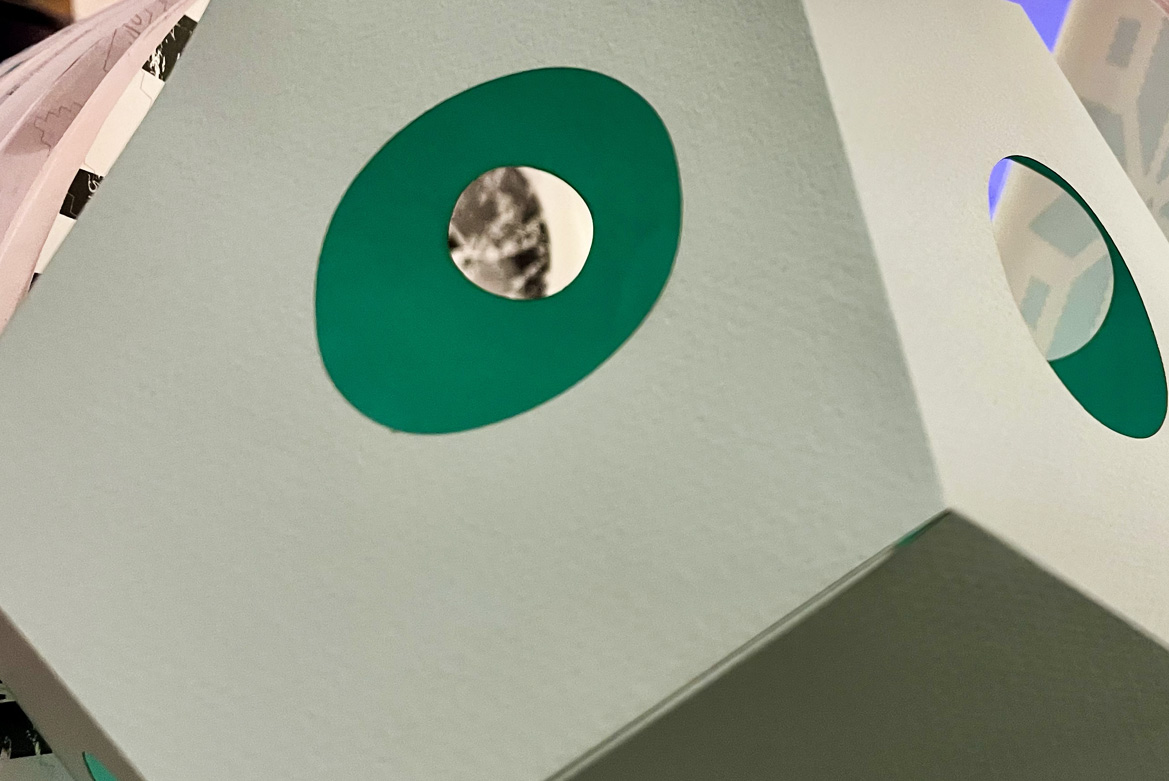
As we stand at the intersection of humanity and artificial intelligence, numerous difficult questions arise. Is the integration of AI with our families ethical? Will individuality be subsumed by a sense of similarity among algorithm-driven human masses? Will the diminishing freedom of choice transform us from uniquely human beings into obedient robots? We should begin to ask these questions, and my artworks aim to illustrate the importance of dialogue surrounding the unknown, both terrifying and exciting, era of AI.


Creating a 10’ by 3’ installation for the AI database, the AI Data Harvesting Book, serves a dual purpose as both an artist’s book and a movie screen. Inspired by AI, the installation takes on a pentagon or home-shaped form, with laser-cutting technology used to craft ornaments that become distorted, symbolizing the misinterpretation of family dynamics. Neon elements are incorporated to convey the artificial nature of the collected and stored data, highlighting the deep and potentially perilous symbiosis between modern families and AI. This book serves as a poignant reminder of the vast databases existing for each member of society and the data harvesting process from every family by unknown entities. It integrates parts of disbanded and distorted Slavic ornamentation and ovals.
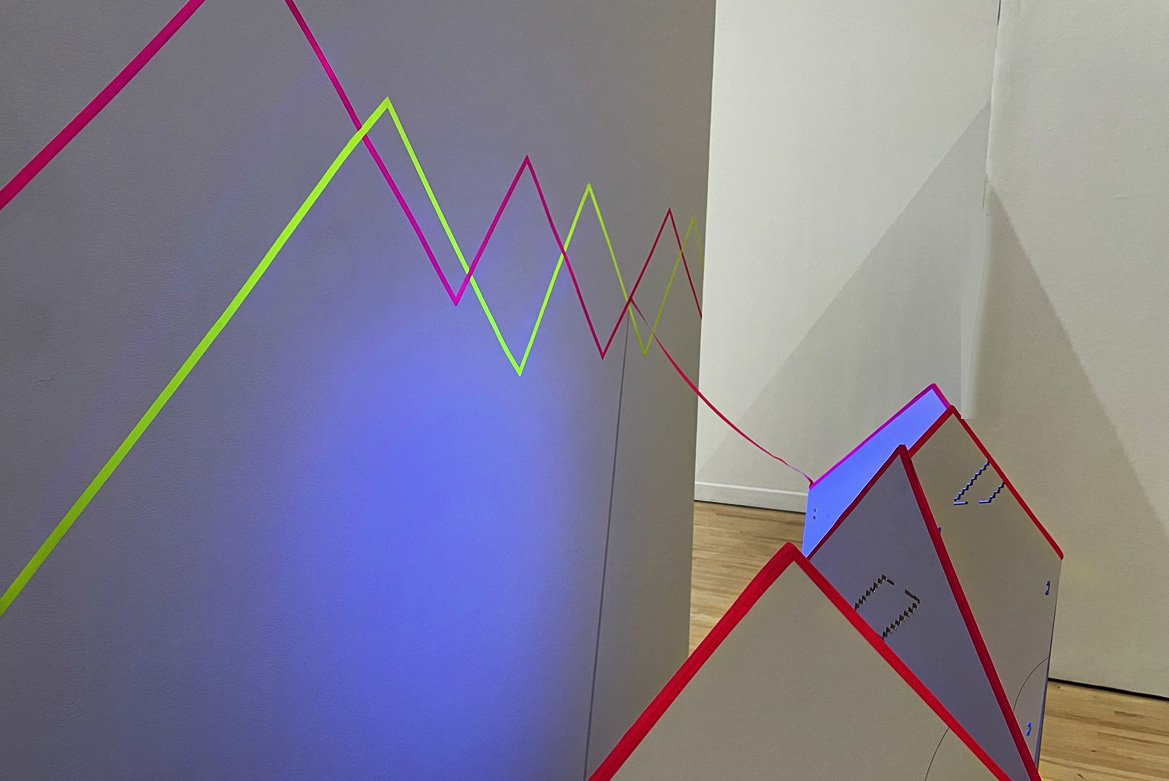
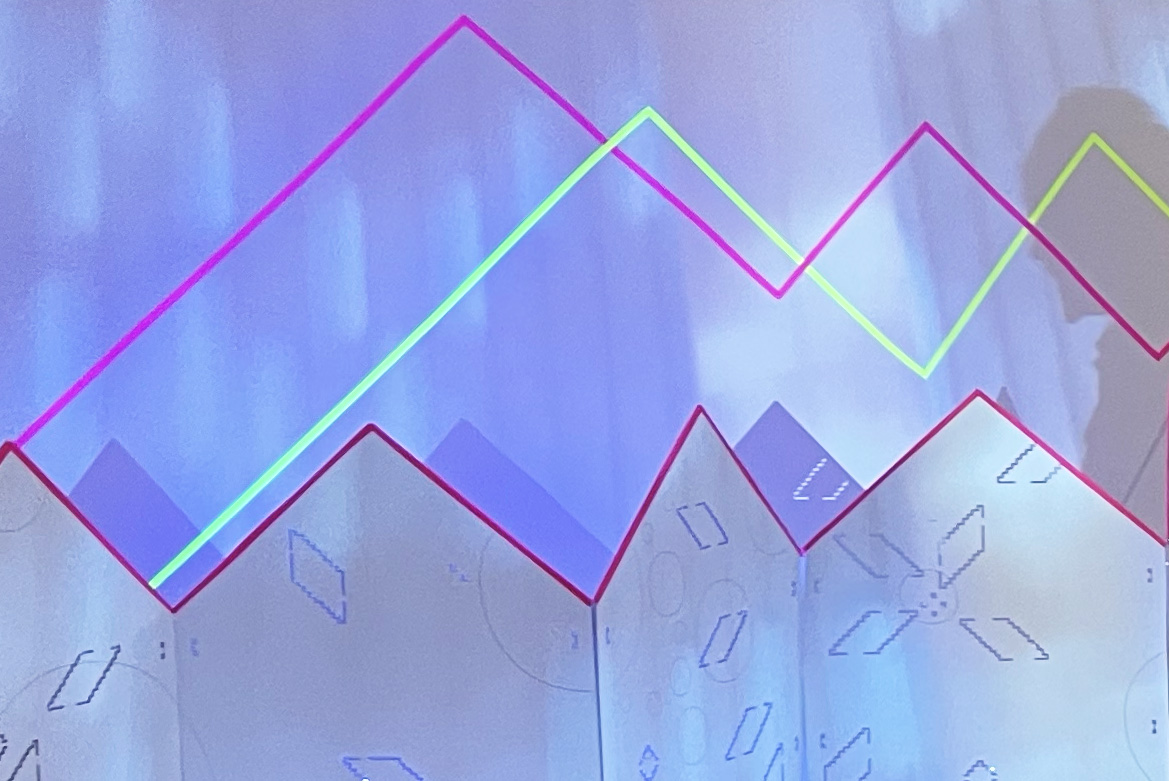
The concept of the home-shaped book, reflecting the origins of family members on its pages, emerged from AI-generated conversations about the ideal artist’s book on family. As a screen for a movie about AI data harvesting, it prompts viewers to consider the databases collected about individuals and families stored on servers. The movie projected onto its nearly blank pages depicts continuous digital feedback collected for each family member, reflecting the evolving relationship between families and AI technologies.
The AI Data Harvesting book’s resemblance to a dominating fence structure over the Family Portrait books reinforces the sense of the family as a small reflection of humanity, being coerced into compliance, devoid of choice.
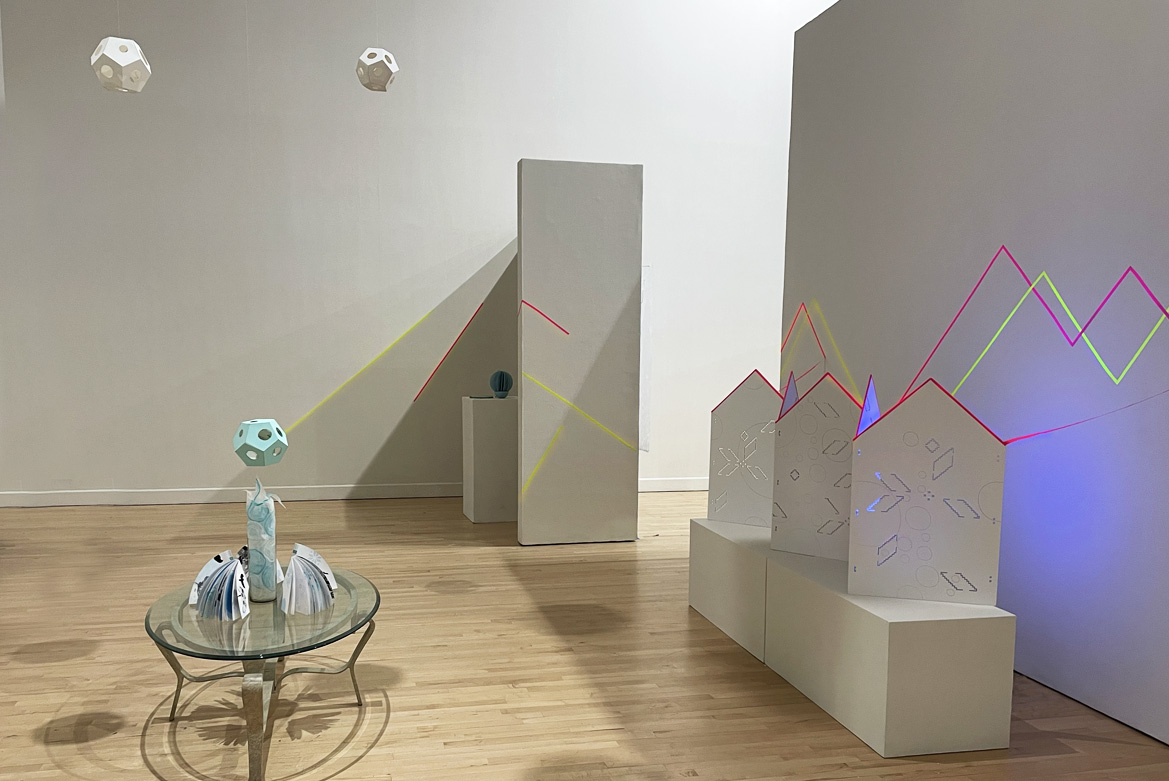
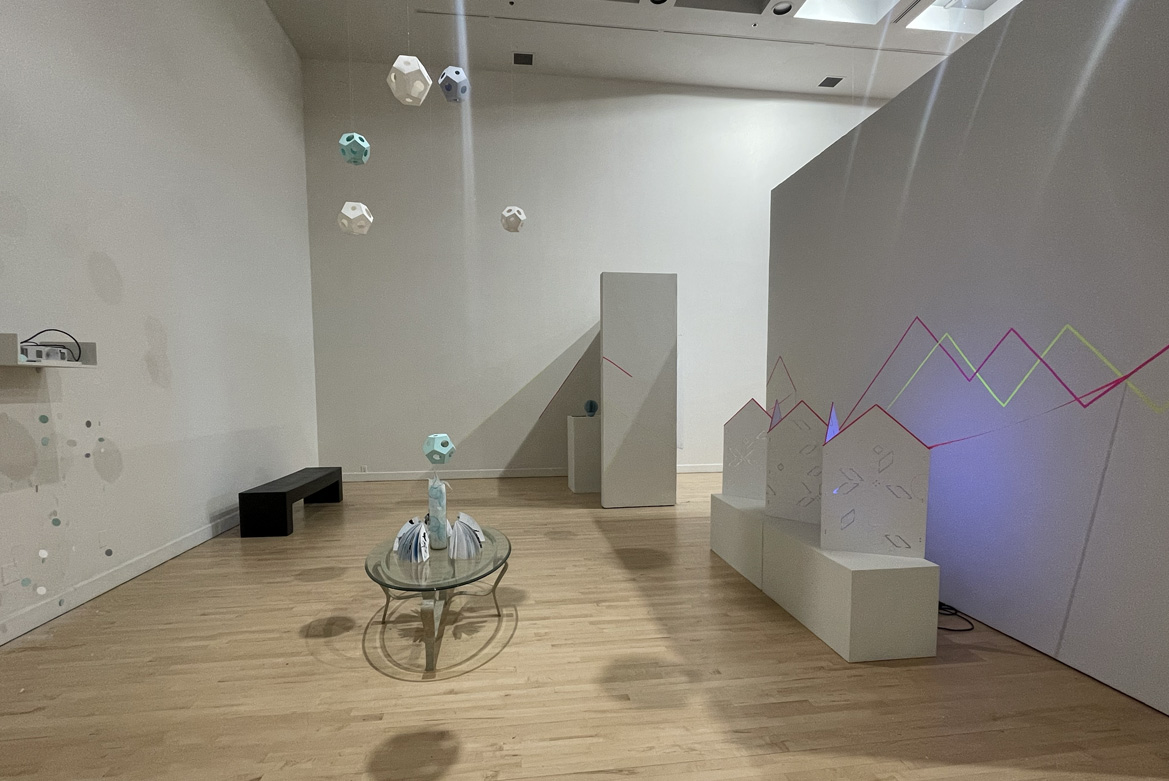
Counterposing the large and mechanical, unnatural forms of the AI Data Harvesting book with the hand-held, ‘handy’ smaller sizes of the handcrafted Family Portrait with AI books allows me to underscore the diminishing significance of personal connections in the future and the perilous nature of overwhelming data harvesting concepts.
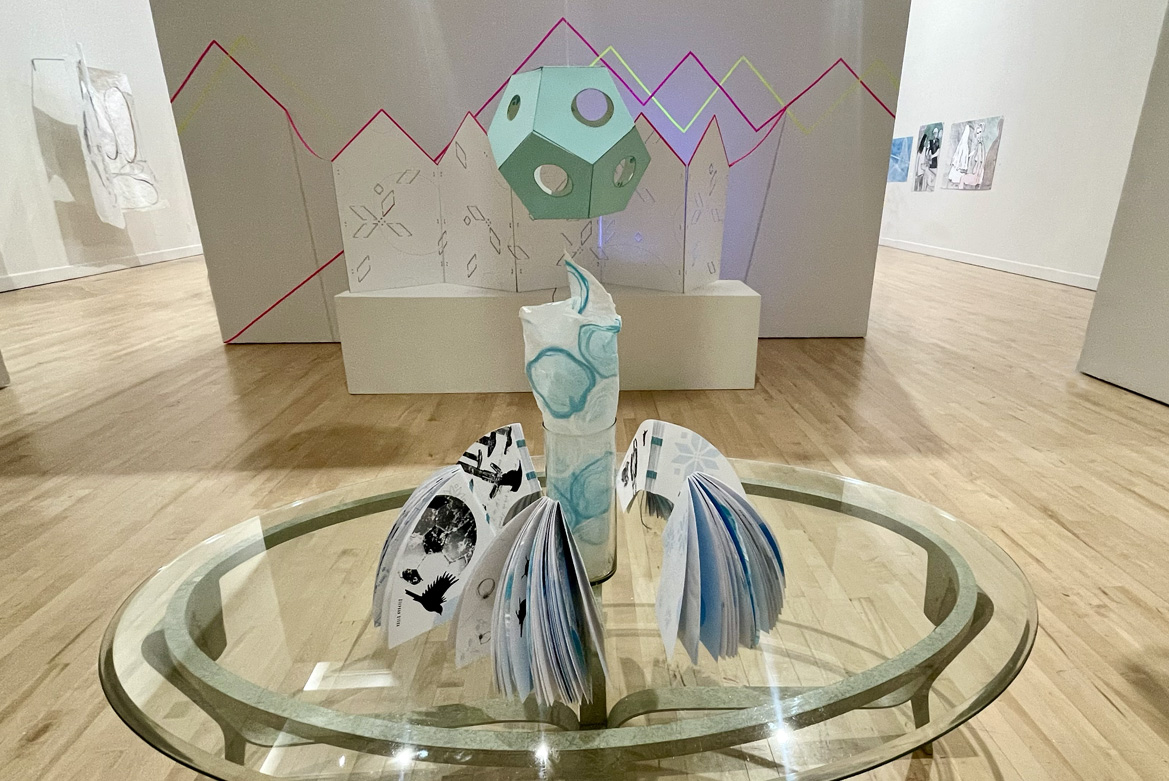
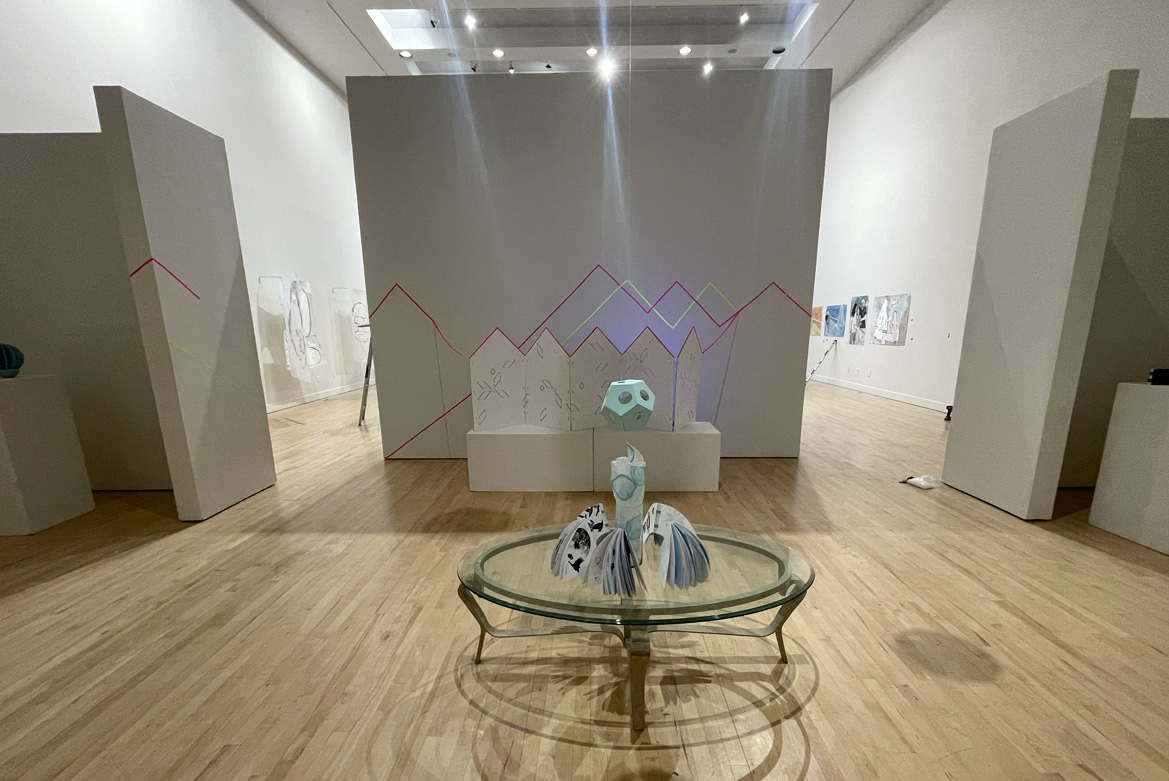
The installation for my exhibition was a captivating process in itself, and I am very thankful to the Amazing Schmidt Gallery team who helped me to display my works in the best possible way, thank you very much! Beautiful and spacy Schmidt Gallery was a great setting for my works. Below you could see some shots of the installation process.


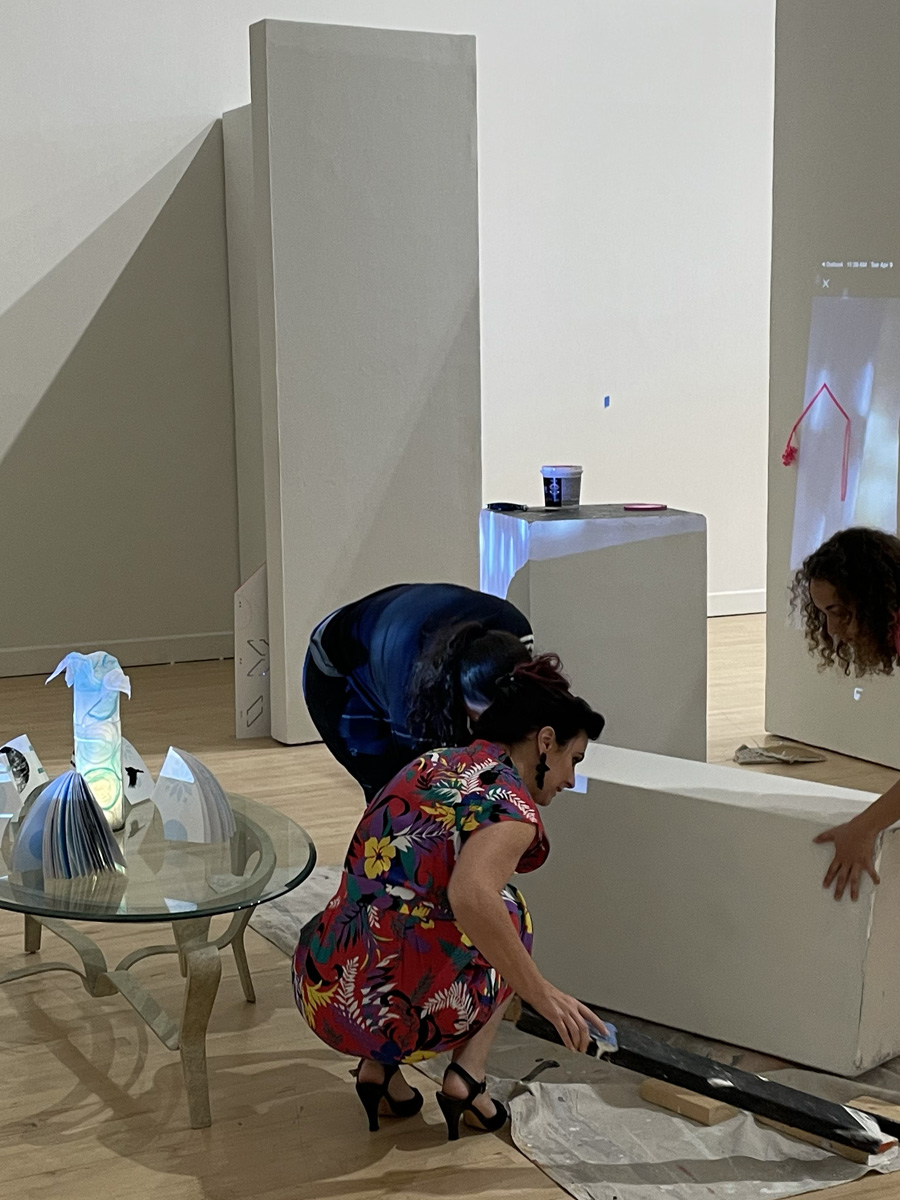
My exploration centers on the prevalent presence of Artificial Intelligence in modern families and societies. Through artist's books, website and AI-generated content, I would like to illustrate the idea that the Brave New World is right here, and we are living through those times right now. Consumerism, power of technology, conformity, and the manipulation of information are real in the modern world in the same way they were described by Huxley.
Graphic designers have the power to influence an audience by visually communicating their message. I aim to draw attention to the ongoing global changes affecting humanity today. By focusing on the family unit as a microcosm of society, I juxtapose the traditional concept of family with the emerging presence of artificial intelligence (AI) as a new household member. This transformation is undeniable, yet paradoxically it has occurred almost unnoticeably The majority remain unaware of AI’s pervasive influence in their lives, as well as the continuous digital surveillance and data collection inherent in the online world. Through graphic design, I seek to advocate for privacy and raise awareness of the potential dangers posed by AI.


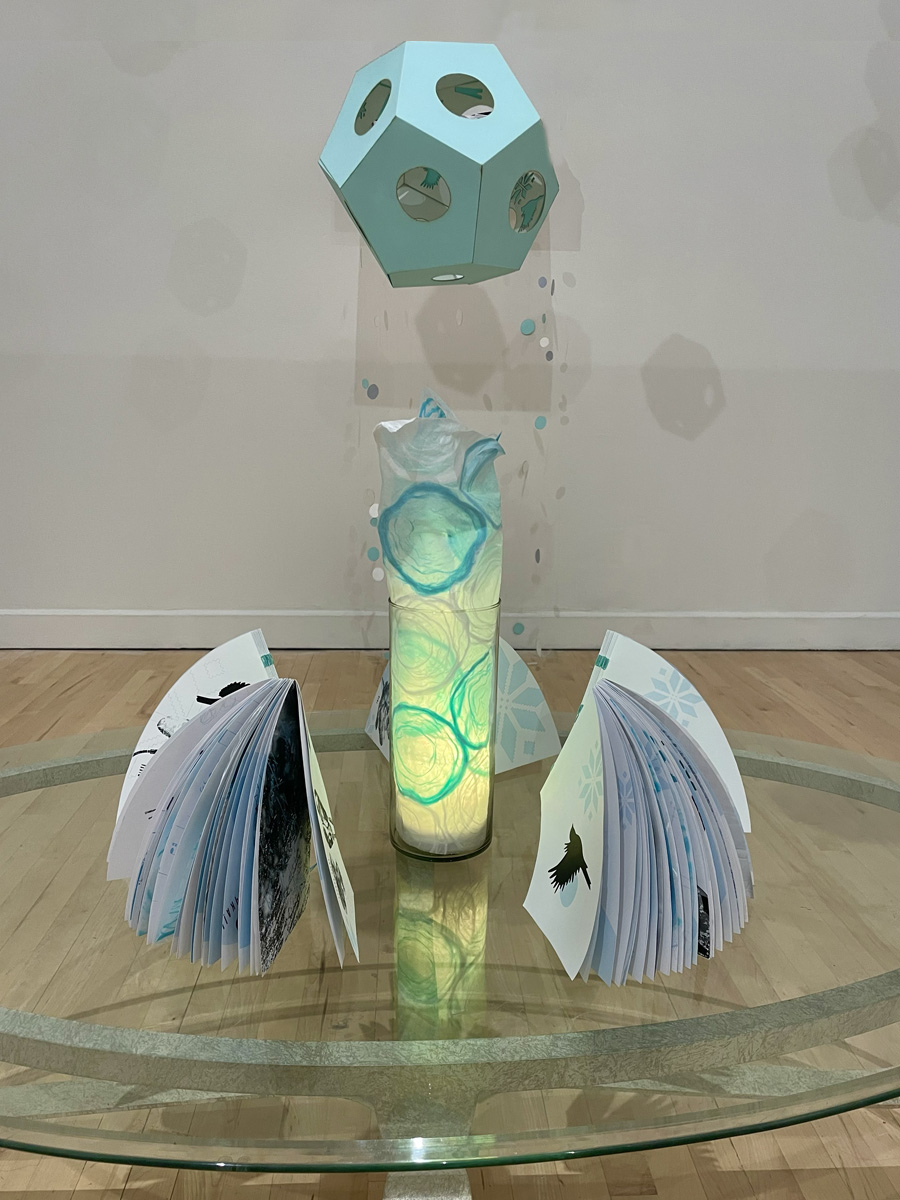
I hope to inspire critical thinking and encourage individuals to take proactive steps to safeguard their freedoms rather than passively succumb to further invasion by AI-driven data harvesting. My goal is for viewers to reevaluate their role in integrating AI into their lives, and to visualize the risks of overconsumption, diminished independent thought, and the subtle influence of advertising—be it for products, ideas, or beliefs—that may lead to unwitting reliance on AI technologies. I am confident that I can capture people’s attention on this issue and prompt a shift in attitudes and behaviors. Eventually, we will learn if AI is a gift sent to us from God, or as Elon Musk says about artificial intelligence that it is “summoning the demon.” Meanwhile, it would be good to remember that the price of liberty and even of common humanity is eternal vigilance.
